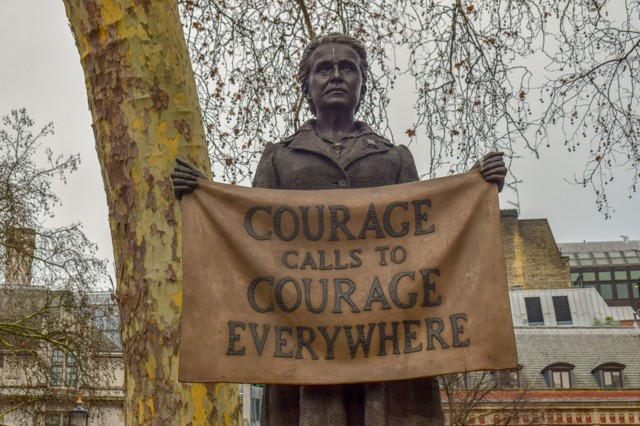|
Understanding Change Management
Objectives & GoalsClick to read
At the end of this module you will be able to:
“The snake which cannot cast it’s skin has to die. As well the minds which are prevented from changing their opinions; they cease to be mind.”
Frederich Nietzche

EntreComp Framework – Resources Area

What is Change Management?Click to read
- Change in business as in life has always been the only Constant.
- In the third decade of the 21st Century the pace of Business Change is accelerating at a pace unprecedented in human history.
- Your Business cannot avoid Change, but Change Management involves more than reacting to this reality.
- Change management is the process of planning, implementing and solidifying changes in an organization.
- Change Management is a planned structured Business Tool to realize the future vision of your Business.
- Change Management is an Entrepreneurial Effort to meet Entrepreneurial Opportunity.

The Nature of Change in BusinessClick to read
- The only thing that does not change in business is the need for change.
- Businesses need to constantly look at new ways of doing things because if they do not, they become uncompetitive & ‘die’.
- In this respect businesses need to adopt the philosophy of continuous improvement & be constantly looking for ways to improve their processes.
The Change Management Vision

Change Management is Nothing NewClick to read
- The Disciplines of Engineering and Psychology particularly from the late 19th Century period of urbanisation and Industrialisation began to come together to help describe how change happens and how to manage change.
- Scientific Management as developed by Frederick Taylor in 1911 is a famous example of Change Management in Practise.
- Production efficiency in a shop of factory could be greatly enhanced by close observation of the individual worker and elimination of waste time and motion in his operation.
- Taylors ideas has strongly influenced Change Management thought and business model development for well over 100 years.
- The Science of Psychology, understanding personnel change, job satisfaction, job security and insecurity, staff retention, morale, productivity and helping individual staff members understand what specific change might -oriented mean to them personally is all part of a psychology-oriented approach to Change Management.
- Effective Change Management involves both the Mechanical (Technological) and human dimension. It’s always important to explore how both dimensions might interact in practise when planning new Business change.
 |
Get Busy! |
- Can you name two famous businesses where there is evidence of Scientific Management in Practise?
- How might Scientific Management inform Change Management in this popular Irish Fast Food Restaurant Chain?
|

The Complexity of Change Management.Click to read
“Change Management is a structured approach to transitioning individuals; teams and organisations from a current state to a desired future state to fully implement a vision and strategy. Change Management is the formal process of organisational change. Change Management means defining and Adopting Corporate Strategies, structures, procedures and Technologies to deal with change stemming from Internal and External Conditions. ” (Anon in Ryerston University 2011).
Structured Approach – Change Management is about structured Planning, not hurried reaction.
People Transition – Change Management is a process of Transition of People From Practise A (Which is often well established, perhaps quite successful and comfortable to Practise B (Which involves ambition, risk and the unknown) . It fundamentally is concerned with all the uncertainties of People Management.
Formal Process – Effective Change Management needs to be a formalised process, informal organic organisational change where change in an organisation just happens over time or as a natural reaction is not Change Management.
Definition and Adoption – A major key to successful Change Management is Communication. Clear Definition and communication of the Challenge to be Addressed and How, will go a long way towards addressing fears and getting the necessary level of buy-in and adoption necessary for success.
Internal & External Causes of ChangeClick to read
There are two main Drivers of Business Change – Internal & External

Why is Change Management Difficult
Why is Change Management DifficultClick to read
- Change management while the lifeblood of business survival, is very difficult.
- In 2006 Harvard Business Review found that 66% of change initiatives fail to achieve their desired business outcomes (Anon. in Ryerson University, 2011).
- Day-to-Day stresses of business practise, orders to be filled, customers to be satisfied leaves little space for the perceived luxury of actually Managing Change as against scrambling to react to it.
- For any small business in particular, theres usually a more immediate task to take priority.
- Managing Change requires honest, unemotional logic-based choices which for many leadership groups or individuals is not easy to channel.
- Change Management is a PROCESS not an event.

 |
Get Busy! |
- Thinking of your Enterprise or an enterprise you are familiar with, suggest Digitisation Change Needed and the blockages in implementing them. Where possible share with a learning colleagues.
|

Staff v Management ConflictClick to read
How to Manage Change
How to get Started! SMART Goal SettingClick to read
- SMART goals is a straightforward affordable in both time and resources way to get any Change Management process started
- Very useful in framing and most importantly the communication of Definition & Adoption
- Makes it easier to help your organization prepare, conform, and accept the change in a streamlined way throughout the change process
- All about fast comprehension and acceptance
- Can be used as a Stand Alone change structure or be built on with a more complicated framework

 |
Get Busy! |
|
‘Bridie’ runs a long-established hairdressers in a small town in the Republic of Ireland. Typical of many similar Irish businesses her business does not yet have a Social Media presence.
Complete the SMART GOAL Table below for this project. Where possible share with a learning colleagues.
|

‘Bridie’s Hair Saloon’ Social Media Adoption Project Smart Goals

Kotter’s Eight Stages of Change ManagementClick to read
- Meaningful and hugely popular theory chosen offering a framework wide and detailed enough to direct and manage the potential pitfalls of Change Management
- Offers a practical roadmap to follow
- Scalable, if followed properly can bring structure to any Change Management project
 
The Importance of Effective LeadershipClick to read
Managing change is important …
But for most organisations, the much bigger challenge is leading change.
Only leadership can blast through the many sources of corporate inertia.
Only leadership can motivate the actions needed to alter behaviour in any significant way.
Only leadership can get change to stick by anchoring it in the very culture of an organisation.
Leading Change, John P. Kotter

Summing upClick to read
|


